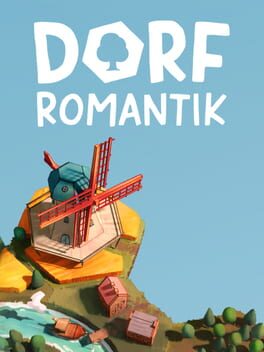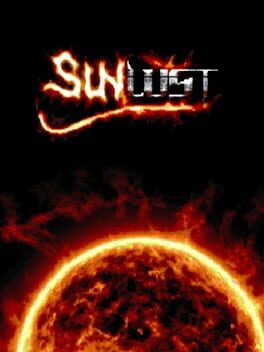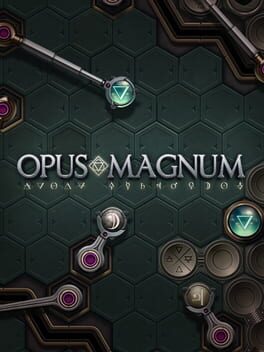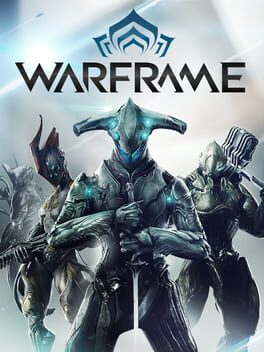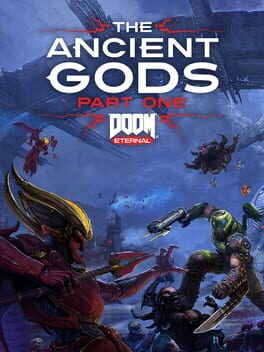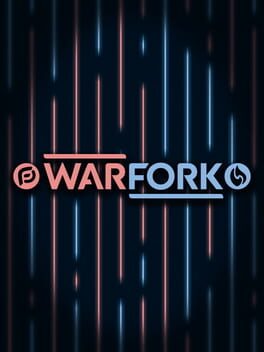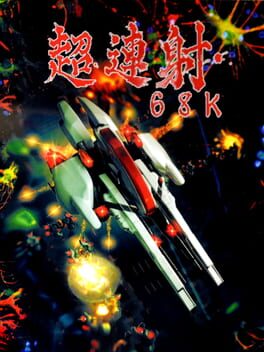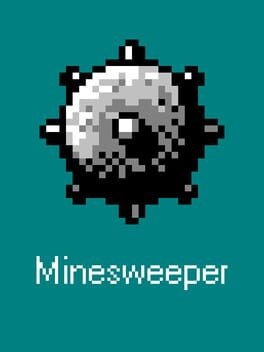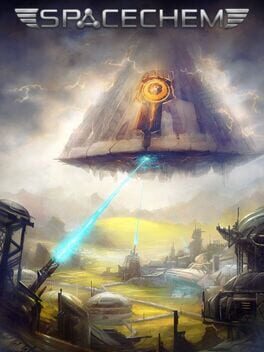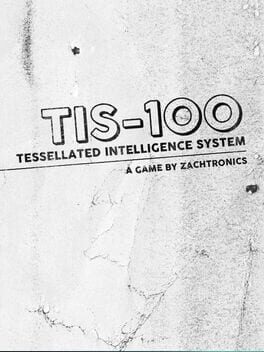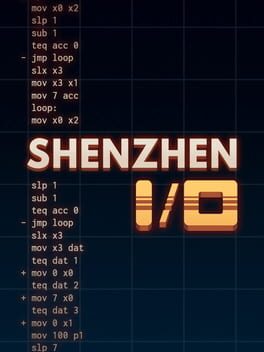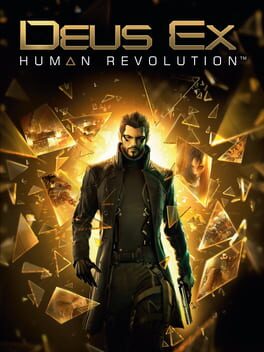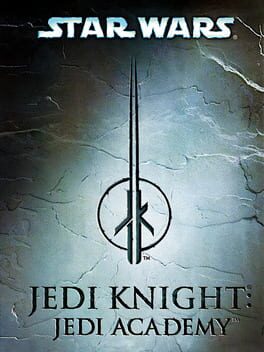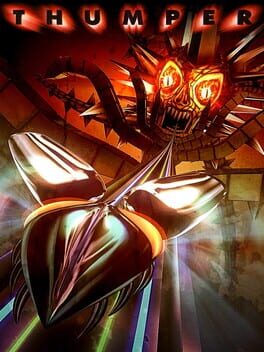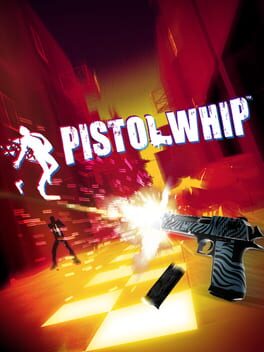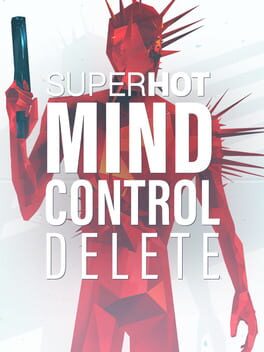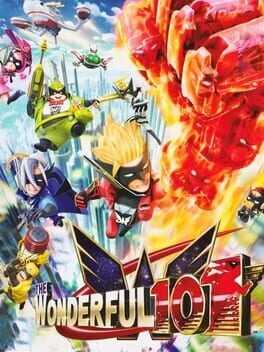17 reviews liked by CabalCrow
Fear & Hunger
2018
Dorfromantik
2021
Sunlust
2015
"Your suffering will be legendary, even in Hell!"
Hellbound: Hellraiser II isn't a great film, but it does have some really good lines. I've always wondered what that legendary suffering would look and feel like - what kind of pain would make Satan himself go "Ohhhhh, damn!!!!!" ?
I'm not much of a fan of Nu-Doom's over-explanatory lore, but the idea that every single Doom WAD is a canonical entry in Doomguy's perpetual torment really works for me. According to Bethesda, Doomguy has spent all of his infinite eternities running around abstract renditions of Hell brewed in teenage bedrooms, murdering crude MSPaint renditions of Simpsons and South Park characters, quicksaving and quickloading himself back into existence over and over and over again in recreations of high school gymnasiums across the world, all with absolutely no hope of respite. His suffering must be legendary, even in Hell.
Of all the cruel punishments I've put Doomguy through over the past year, Sunlust has got to be one of the worst. I didn't even choose Ultra-Violence, but still Doomguy died again and again and again and again, in so many different ways. When I accidentally quicksaved myself into a corner with three Archviles and Doomguy only had 7HP and no armor, he died again and again and again and again and again and again and again and again and again while I tried in vain to find a way out.
Challenges in this wad often seem impossible. Three cyberdemons, forty revenants and five pain elementals? On the 'normal' difficulty'?! "It can't be done!" is the Sunlust battlecry on just about every level. But somehow, there always seems to be a way. Yeah, it usually requires Doomguy to die upwards of two dozen times, but there's always a way.
Zach Stephens and Daniel Jakobsson have essentially designed a puzzle game in the Doom engine - one that requires players to learn just about every facet of John Carmack's beautifully twisted engine. How the weapons work, and what they work best on. What the powerups do, and where and when they can be used most effectively. How the enemies think and move, and the orders in which they can be most capably defeated. The ways in which Doomguy himself moves, and how that movement can be exploited to keep him safe. By the end of the wad, I was doing legitimate math to work out the HP/ammo risks associated with certain decisions! It's beautiful, legendary suffering.
There are so many moments here that make you wonder just how much of the Doom engine's magic was actually by design, and whether Carmack knew it was capable of making something as grand as Sunlust. Was he pissed off when Sandy Petersen made rinkydink shit like The Cathedral or Tricks & Traps? Maybe we weren't ready for Sunlust back then... Exposing 1993 Doom players to something like Sunlust's Go Fuck Yourself would probably be like giving an Extreme Nacho flavour Dorito to a medieval peasant. They just couldn't handle it.
https://www.youtube.com/watch?v=E3-CpzZJl8w
Hellbound: Hellraiser II isn't a great film, but it does have some really good lines. I've always wondered what that legendary suffering would look and feel like - what kind of pain would make Satan himself go "Ohhhhh, damn!!!!!" ?
I'm not much of a fan of Nu-Doom's over-explanatory lore, but the idea that every single Doom WAD is a canonical entry in Doomguy's perpetual torment really works for me. According to Bethesda, Doomguy has spent all of his infinite eternities running around abstract renditions of Hell brewed in teenage bedrooms, murdering crude MSPaint renditions of Simpsons and South Park characters, quicksaving and quickloading himself back into existence over and over and over again in recreations of high school gymnasiums across the world, all with absolutely no hope of respite. His suffering must be legendary, even in Hell.
Of all the cruel punishments I've put Doomguy through over the past year, Sunlust has got to be one of the worst. I didn't even choose Ultra-Violence, but still Doomguy died again and again and again and again, in so many different ways. When I accidentally quicksaved myself into a corner with three Archviles and Doomguy only had 7HP and no armor, he died again and again and again and again and again and again and again and again and again while I tried in vain to find a way out.
Challenges in this wad often seem impossible. Three cyberdemons, forty revenants and five pain elementals? On the 'normal' difficulty'?! "It can't be done!" is the Sunlust battlecry on just about every level. But somehow, there always seems to be a way. Yeah, it usually requires Doomguy to die upwards of two dozen times, but there's always a way.
Zach Stephens and Daniel Jakobsson have essentially designed a puzzle game in the Doom engine - one that requires players to learn just about every facet of John Carmack's beautifully twisted engine. How the weapons work, and what they work best on. What the powerups do, and where and when they can be used most effectively. How the enemies think and move, and the orders in which they can be most capably defeated. The ways in which Doomguy himself moves, and how that movement can be exploited to keep him safe. By the end of the wad, I was doing legitimate math to work out the HP/ammo risks associated with certain decisions! It's beautiful, legendary suffering.
There are so many moments here that make you wonder just how much of the Doom engine's magic was actually by design, and whether Carmack knew it was capable of making something as grand as Sunlust. Was he pissed off when Sandy Petersen made rinkydink shit like The Cathedral or Tricks & Traps? Maybe we weren't ready for Sunlust back then... Exposing 1993 Doom players to something like Sunlust's Go Fuck Yourself would probably be like giving an Extreme Nacho flavour Dorito to a medieval peasant. They just couldn't handle it.
https://www.youtube.com/watch?v=E3-CpzZJl8w
Opus Magnum
2017
Opus Magnum represents an interesting maturation in the Zachtronics catalogue. The most visually evident aspect of this maturation is that of aesthetic. Gone is the cold pragmatism of most former (and future) Zachlikes, and in its place is an inviting opulence. The green honeycomb background, the shiny metallic parts, and the revitalized alchemical imagery bring forth an evocative veneer that almost succeeds in hiding the fact that you are actually coding in disguise. The GIF maker is an ingenious rework from Infinifactory, resulting in easily sharable clips of people proud of their creations. And it’s hard not to be slightly proud of your contraptions, as they chug and rotate around following a mesmerizing periodic pattern.
This shift to a strongly appealing aesthetic fits inside a bigger push towards more accessibility. Zachtronics’ veterans will almost immediately note the sharp decline in the actual puzzle-solving challenge here. Compared to the multistaged grandeur of late-game Infinifactory or the spartan ruthlessness of TIS-100, Opus Magnum is fairly easy throughout its runtime. Part of this is a direct consequence of flirting with the infinite (or more like machine precision, which is practically infinite). The player has an astonishing amount of solving power at their disposal, unhindered by any form of space or instruction constraints. It becomes more a matter of when, rather than if, one can solve a puzzle. I was certainly disappointed by this realization. One of the core appeals of these games for me is being thrown into the wilderness and being asked to come out alive with the tools provided. This disappointment has subsided over the years for two reasons. The first is acknowledging the benefits of such openness with puzzle design and tool power. Seeing folks who have never played a Zachtronics game before brimming with satisfaction at their solution. Seeing them sharing their design in a beautiful and convenient manner. All this pokes directly at the heart of what makes the act of problem-solving so damn fun! There are four other games before this where I can baptize myself with fire if I so desire…
Regardless, the second reason is a bit more selfish. One that is another consequence of infinite solving power - incredible optimization depth. Now, here’s a confession. I have over 500 hours in this game. I will spend a thousand more over the coming years. I have performed relatively well in high-level tournaments and have a couple of optimization world records. Still, I would only consider myself somewhat competent at this game. So as a warning, this part is gonna get a bit technical and poke at some of the deeper design decisions and dilemmas that one faces as one falls down this rabbit hole.
Much like other Zachtronics games, the gameplay loop essentially boils down to taking provided inputs in the form of atoms, moving them using mechanical arms and tracks, transforming them using glyphs, and finally dropping them as output. The solution goal here is consistency. Your contraption should, ideally, be able to loop infinitely often. After solving the puzzle, the follow-up question is minimizing one of the three provided metrics. Here’s where all that depth in the design process shows up. In Opus Magnum’s case, there’s the cost of the parts (Cost), the speed of the solution (Cycles), and the amount of space a solution takes (Area). Minimizing one of these metrics usually impacts the other two noticeably, but each offers a substantially different way of solving the puzzle. There’s another tier of optimization that exists beyond this primary level, where you try reducing a second metric at your lowest primary metric score.
Primary Cost minimization requires solving the puzzle with the bare minimum number of arms and glyphs. After some experience with the game, the actual process of recognizing the absolutely required glyphs becomes noticeably easy and the number of arms required is almost always one. Some glyphs have bizarre shapes, thus mandating the use of longer arms or tracks, but ultimately it does become “trivial” to realize what minimum cost is. There does exist a silver lining though. Some puzzle inputs and outputs occupy a lot of space, giving enough flexibility to maybe not require extra tracks or glyphs. This realm of “dubious cost”, as the community calls it, is rich with theory and provides some of the hardest optimization challenges in the game. In terms of secondary optimization, you can pick one of Cycles or Area to minimize. Cycles minimization at low cost mostly boils down to smart programming choices, while Area minimization at low cost amounts to smarter rotations and glyph placement.
Primary Area minimization is closely related to Primary Cost minimization since both try to solve the puzzle with as few pieces as possible. Area just requires better packing of the inputs, outputs, glyphs, and arms. Here the solution process boils down to two major steps. The first is figuring out a good packing of everything you need. The second is programming the arms and ensuring you don’t swing the product you are making too much. More nuanced concepts of the game emerge here, such as input suppression (placing an atom on a partially moved input prevents the next input from spawning). Secondary optimization as Cost or Cycles doesn’t radically change the types of solutions one explores for this metric. This two-step process and a consistent level of challenge across all puzzles make me like this metric more than Cost.
Primary Cycles minimization is intense. You construct massive beasts of machines to reduce two important numbers - Latency (the amount of time it takes to make the first output), and Throughput (the average amount of time between two outputs). Surprisingly enough, tricks to minimize Throughput are different from those that minimize Latency, and sometimes they contradict each other. This results in the richest variety of solutions of any metric, by a substantial amount. Secondary optimization in Cost or Area also heavily influence the design process, and some of the harder Cycles records in the game are massive collaborations across numerous top players.
There’s also a fourth primary metric, Instructions. This only shows up in a special class of puzzles called Production puzzles, where you have to solve the puzzle in a constrained space. Production puzzles are a somewhat controversial addition to the game, as they end up as a response to the game’s lack of difficulty. Unfortunately, the space constraints mean that the actual potential for design is noticeably limited. A swing too hard in the opposite direction, in a way.
These primary metrics are among the better-balanced ones in the Zachtronics’ catalogue, but there’s still some criticism to be had. Area and Cost, for instance, mirror each other a little too much. They both turn the game into a fascinating challenge in constraints, but the constraints are somewhat similar. Cycles minimization can often result in massively exploiting the game’s output system. On the one hand, Opus Magnum (usually) asks for 6 outputs to ensure completion of a puzzle. This surprisingly low requirement means that one can essentially “hack” their way into solving the puzzle before the machine crashes one moment later. On the other hand, the actual detection of the output is janky for an entire class of levels (infinite polymers), resulting in wonderfully bizarre solutions there. I’m certainly a fan of these eccentricities, but they do end up going against the spirit of infinitely running engines. Finally, Instructions is relatively uninteresting as a metric. The sheer power of Opus’ tools has resulted in every single campaign level being solved in at most 4 instructions, and Production puzzles are too few and far between to meaningfully challenge this metric.
Now moving back to infinite space and power. One of the other consequences is that of custom metrics, a surprisingly new phenomenon in Zachlikes. The Opus Magnum community is a desperate hungry lot, and we craft numerous rich metrics to explore on our own. The first example is the SUM metric, which is just the sum of the Cost, Cycles, and Area score of a solution. This bizarre metric forces some surprising compromises at a design level, and coincidentally results in some of the most aesthetically-pleasing solutions. Other custom metrics are Height and Width, which look at how much space a solution occupies vertically and horizontally, respectively. The secondary goal in these metrics is that of Cycles optimization. One of the most bizarre custom metrics is that of Overlap. Turns out there’s a glitch in the game that allows multiple glyphs to be placed on top of each other. This allows for astonishingly fast solutions, and optimization here splits the very notion of a single cycle into fragments (i.e. subcycles) that can be influenced. As I said, we’re a desperate hungry lot.
If there’s one major criticism I’d throw at the game, it would be that of the UI. There are four options for screen resolution, resulting in weird compromises in how the game looks on the screen. None of these choices is particularly ideal, and I’ve had to shift between resolutions based on the puzzle itself. Another issue with the UI is the actual programming part. Unlike previous Zachtronics games, which intertwine the process of design and programming, Opus asks you to place objects on a grid and separately code their instructions on a large tape. You have to drag-and-drop instructions onto this tape, which can be sped up using fixed keyboard shortcuts for the instructions. This is bizarrely limiting, as drag-and-drops are slow for how big the tapes for even simple solutions can get, and fixed keyboard shortcuts can be inconvenient to get used to. The worst part is arguably when you want to insert an instruction in the middle of a full tape - you have to drag-or-drop exactly in the middle. There’s no keyboard shortcut for that! This means fixing parts of your solution becomes taxing over time, especially in the case of Cost or Area solutions, which have incredibly long instruction tapes. Cycles solutions don’t escape from this as well. It’s cumbersome to copy large chunks of instructions to reuse, requiring you to drag your mouse over multiple screens while holding the Shift key. Finally, the actual speed of running the solutions is surprisingly slow. Even the Alt-click speedup isn’t sufficient at points. Granted, one can use speedhacks to alleviate this, but this makes Cost and Area solutions painful to deal with overtime. I think a better checkpoint system for instruction locations across a tape would have made navigation and code reuse much more efficient. Ironic really, that a game all about efficiency does have some notable inefficiencies when it comes to actually playing the game. This only really grates on folks who spend far too much time on this game, so maybe it’s on us?
Regardless, Opus Magnum is a pretty cool game. It’s probably the most accessible and aesthetically-pleasing Zachtronics game. Getting into higher-level play has been one of the most satisfying parts of my gaming life in the past three years. Go play it y’all!
This shift to a strongly appealing aesthetic fits inside a bigger push towards more accessibility. Zachtronics’ veterans will almost immediately note the sharp decline in the actual puzzle-solving challenge here. Compared to the multistaged grandeur of late-game Infinifactory or the spartan ruthlessness of TIS-100, Opus Magnum is fairly easy throughout its runtime. Part of this is a direct consequence of flirting with the infinite (or more like machine precision, which is practically infinite). The player has an astonishing amount of solving power at their disposal, unhindered by any form of space or instruction constraints. It becomes more a matter of when, rather than if, one can solve a puzzle. I was certainly disappointed by this realization. One of the core appeals of these games for me is being thrown into the wilderness and being asked to come out alive with the tools provided. This disappointment has subsided over the years for two reasons. The first is acknowledging the benefits of such openness with puzzle design and tool power. Seeing folks who have never played a Zachtronics game before brimming with satisfaction at their solution. Seeing them sharing their design in a beautiful and convenient manner. All this pokes directly at the heart of what makes the act of problem-solving so damn fun! There are four other games before this where I can baptize myself with fire if I so desire…
Regardless, the second reason is a bit more selfish. One that is another consequence of infinite solving power - incredible optimization depth. Now, here’s a confession. I have over 500 hours in this game. I will spend a thousand more over the coming years. I have performed relatively well in high-level tournaments and have a couple of optimization world records. Still, I would only consider myself somewhat competent at this game. So as a warning, this part is gonna get a bit technical and poke at some of the deeper design decisions and dilemmas that one faces as one falls down this rabbit hole.
Much like other Zachtronics games, the gameplay loop essentially boils down to taking provided inputs in the form of atoms, moving them using mechanical arms and tracks, transforming them using glyphs, and finally dropping them as output. The solution goal here is consistency. Your contraption should, ideally, be able to loop infinitely often. After solving the puzzle, the follow-up question is minimizing one of the three provided metrics. Here’s where all that depth in the design process shows up. In Opus Magnum’s case, there’s the cost of the parts (Cost), the speed of the solution (Cycles), and the amount of space a solution takes (Area). Minimizing one of these metrics usually impacts the other two noticeably, but each offers a substantially different way of solving the puzzle. There’s another tier of optimization that exists beyond this primary level, where you try reducing a second metric at your lowest primary metric score.
Primary Cost minimization requires solving the puzzle with the bare minimum number of arms and glyphs. After some experience with the game, the actual process of recognizing the absolutely required glyphs becomes noticeably easy and the number of arms required is almost always one. Some glyphs have bizarre shapes, thus mandating the use of longer arms or tracks, but ultimately it does become “trivial” to realize what minimum cost is. There does exist a silver lining though. Some puzzle inputs and outputs occupy a lot of space, giving enough flexibility to maybe not require extra tracks or glyphs. This realm of “dubious cost”, as the community calls it, is rich with theory and provides some of the hardest optimization challenges in the game. In terms of secondary optimization, you can pick one of Cycles or Area to minimize. Cycles minimization at low cost mostly boils down to smart programming choices, while Area minimization at low cost amounts to smarter rotations and glyph placement.
Primary Area minimization is closely related to Primary Cost minimization since both try to solve the puzzle with as few pieces as possible. Area just requires better packing of the inputs, outputs, glyphs, and arms. Here the solution process boils down to two major steps. The first is figuring out a good packing of everything you need. The second is programming the arms and ensuring you don’t swing the product you are making too much. More nuanced concepts of the game emerge here, such as input suppression (placing an atom on a partially moved input prevents the next input from spawning). Secondary optimization as Cost or Cycles doesn’t radically change the types of solutions one explores for this metric. This two-step process and a consistent level of challenge across all puzzles make me like this metric more than Cost.
Primary Cycles minimization is intense. You construct massive beasts of machines to reduce two important numbers - Latency (the amount of time it takes to make the first output), and Throughput (the average amount of time between two outputs). Surprisingly enough, tricks to minimize Throughput are different from those that minimize Latency, and sometimes they contradict each other. This results in the richest variety of solutions of any metric, by a substantial amount. Secondary optimization in Cost or Area also heavily influence the design process, and some of the harder Cycles records in the game are massive collaborations across numerous top players.
There’s also a fourth primary metric, Instructions. This only shows up in a special class of puzzles called Production puzzles, where you have to solve the puzzle in a constrained space. Production puzzles are a somewhat controversial addition to the game, as they end up as a response to the game’s lack of difficulty. Unfortunately, the space constraints mean that the actual potential for design is noticeably limited. A swing too hard in the opposite direction, in a way.
These primary metrics are among the better-balanced ones in the Zachtronics’ catalogue, but there’s still some criticism to be had. Area and Cost, for instance, mirror each other a little too much. They both turn the game into a fascinating challenge in constraints, but the constraints are somewhat similar. Cycles minimization can often result in massively exploiting the game’s output system. On the one hand, Opus Magnum (usually) asks for 6 outputs to ensure completion of a puzzle. This surprisingly low requirement means that one can essentially “hack” their way into solving the puzzle before the machine crashes one moment later. On the other hand, the actual detection of the output is janky for an entire class of levels (infinite polymers), resulting in wonderfully bizarre solutions there. I’m certainly a fan of these eccentricities, but they do end up going against the spirit of infinitely running engines. Finally, Instructions is relatively uninteresting as a metric. The sheer power of Opus’ tools has resulted in every single campaign level being solved in at most 4 instructions, and Production puzzles are too few and far between to meaningfully challenge this metric.
Now moving back to infinite space and power. One of the other consequences is that of custom metrics, a surprisingly new phenomenon in Zachlikes. The Opus Magnum community is a desperate hungry lot, and we craft numerous rich metrics to explore on our own. The first example is the SUM metric, which is just the sum of the Cost, Cycles, and Area score of a solution. This bizarre metric forces some surprising compromises at a design level, and coincidentally results in some of the most aesthetically-pleasing solutions. Other custom metrics are Height and Width, which look at how much space a solution occupies vertically and horizontally, respectively. The secondary goal in these metrics is that of Cycles optimization. One of the most bizarre custom metrics is that of Overlap. Turns out there’s a glitch in the game that allows multiple glyphs to be placed on top of each other. This allows for astonishingly fast solutions, and optimization here splits the very notion of a single cycle into fragments (i.e. subcycles) that can be influenced. As I said, we’re a desperate hungry lot.
If there’s one major criticism I’d throw at the game, it would be that of the UI. There are four options for screen resolution, resulting in weird compromises in how the game looks on the screen. None of these choices is particularly ideal, and I’ve had to shift between resolutions based on the puzzle itself. Another issue with the UI is the actual programming part. Unlike previous Zachtronics games, which intertwine the process of design and programming, Opus asks you to place objects on a grid and separately code their instructions on a large tape. You have to drag-and-drop instructions onto this tape, which can be sped up using fixed keyboard shortcuts for the instructions. This is bizarrely limiting, as drag-and-drops are slow for how big the tapes for even simple solutions can get, and fixed keyboard shortcuts can be inconvenient to get used to. The worst part is arguably when you want to insert an instruction in the middle of a full tape - you have to drag-or-drop exactly in the middle. There’s no keyboard shortcut for that! This means fixing parts of your solution becomes taxing over time, especially in the case of Cost or Area solutions, which have incredibly long instruction tapes. Cycles solutions don’t escape from this as well. It’s cumbersome to copy large chunks of instructions to reuse, requiring you to drag your mouse over multiple screens while holding the Shift key. Finally, the actual speed of running the solutions is surprisingly slow. Even the Alt-click speedup isn’t sufficient at points. Granted, one can use speedhacks to alleviate this, but this makes Cost and Area solutions painful to deal with overtime. I think a better checkpoint system for instruction locations across a tape would have made navigation and code reuse much more efficient. Ironic really, that a game all about efficiency does have some notable inefficiencies when it comes to actually playing the game. This only really grates on folks who spend far too much time on this game, so maybe it’s on us?
Regardless, Opus Magnum is a pretty cool game. It’s probably the most accessible and aesthetically-pleasing Zachtronics game. Getting into higher-level play has been one of the most satisfying parts of my gaming life in the past three years. Go play it y’all!
Warframe
2013
I’d rather have the 366 hours I’ve spent on Warframe to be curtailed off my remaining lifespan than showing on my Steam profile.
Never seen a game with such a disproportionate ratio of potentially cool tools : content where any of them matter for shit.
40+ characters, each having three skills and one ultimate. A robust card customization system that lets you change their attributes directly so the same healer can be played as a burst white mage on a long cooldown, a wide range party buffer or any other combination of strength vs range vs cost vs duration. Sixteen different elements to attach to your weapons, pretty shallow as they are simple colored bullets that will depleted the bad guys’s bars faster or slower, but they are there. Two firearms and one melee weapon. Absolute fuck all to use all of this in.
You suffer through an inane story for weird people really into reading codex entries for an entire solar system worth of missions where enemies ramp up from “easily one shot with a level 3 weapon” to “the same, but maybe you need to slap some cards on it”, and that’s the baseline of everything you’ll face with your level 1000 robot ninja. No dungeons, no raids, no bosses built around the power level of a midgame player who finished the story, let alone a well specced endgame one. Seriously, imagine a moba where you can only play 5v3 against bots in a single lane.
Okay, I’m only being 98% truthful. There’s a daily mission consisting of a random story quest with tacked on multipliers that resembles something a high level character may face; if you are lucky enough that the winner of the lottery is a boss battle, instead of a stealth mission for the fifth consecutive day, the game suddenly turns out pretty fun. To me, it happened exactly once.
There’s also a never-ending(?) arena, which they put in the game shortly before I dropped it,
where you need to beat a floor before the clock ticks 0 to progress and difficulty ramps up very fast, a genuinely good step in the right direction although these characters SCREAM team based synergies and MMO roles, a difficult DPS check may be appreciated but it will make me wonder what’s the point of Frames like Oberon nonetheless. This game has a weird fascination with infinitely scaling horde fights, before the aforementioned mode got in the generally accepted “endgame build showoff” mode was to sit in the basic Survival mission type, which doesn’t end until you physically exit the map, and sit there for LITERAL HOURS with a near immortal Frame like Inaros until enemies strong enough to put a dent on you popped up. Pure insanity.
At least this grind is alleviated by the much celebrated parkour system, it’s cute but it’s quickly solved by cycling through your three main forms of ground movements of jump, slide, and roll until you hit a slope, jump again pointing your crosshair towards the desired height, and activating your air thrusters to glide robo Max Payne style. Complex enough for a good chunk of the playerbase to get stuck at the “mission required to level up your account you can only attempt once a day” that made you high jump in place lol. What I’m saying is, it could’ve been worse, it could’ve been a cover shooter.
If you walk into any Warframe discussion the fanbase will be super fast to point at the very generous free to play formula as a sign of goodwill from the developers, and it’s admittedly very true: a 15 bucks expense turns you into a millionaire who can snatch any vaulted piece of gear that pops up in trade chat for a good while, and you are only a few good deals away to becoming an oil baron. It doesn’t balance the -10000 points lost from the insane Forma system, a craftable item necessary for high level weapon customization that is locked to a 24(real life)h timer. Either you have the foresight to always have your lab churning them out ever since your first day, in preparation for the endgame where you will burn through them, or 200 hours later you’ll bang your head against the wall as the two hours process of taking a new gun from zero to hero just became a five days endeavor.
Sad game for soccer dads who get excited when the post office rolls the number on the electronic billboards, happy to throw their ticket in the trashcan and go home when their turn is up rather than use the opportunity to make something of that wasted time. I don’t like it.
in the commonly mmo-shaped idea of them as endgame hardcore content, technically there’s bosses and every single mission is an instanced dungeon, but they’re still part of the dozing nightmare that is the main quest
Never seen a game with such a disproportionate ratio of potentially cool tools : content where any of them matter for shit.
40+ characters, each having three skills and one ultimate. A robust card customization system that lets you change their attributes directly so the same healer can be played as a burst white mage on a long cooldown, a wide range party buffer or any other combination of strength vs range vs cost vs duration. Sixteen different elements to attach to your weapons, pretty shallow as they are simple colored bullets that will depleted the bad guys’s bars faster or slower, but they are there. Two firearms and one melee weapon. Absolute fuck all to use all of this in.
You suffer through an inane story for weird people really into reading codex entries for an entire solar system worth of missions where enemies ramp up from “easily one shot with a level 3 weapon” to “the same, but maybe you need to slap some cards on it”, and that’s the baseline of everything you’ll face with your level 1000 robot ninja. No dungeons, no raids, no bosses built around the power level of a midgame player who finished the story, let alone a well specced endgame one. Seriously, imagine a moba where you can only play 5v3 against bots in a single lane.
Okay, I’m only being 98% truthful. There’s a daily mission consisting of a random story quest with tacked on multipliers that resembles something a high level character may face; if you are lucky enough that the winner of the lottery is a boss battle, instead of a stealth mission for the fifth consecutive day, the game suddenly turns out pretty fun. To me, it happened exactly once.
There’s also a never-ending(?) arena, which they put in the game shortly before I dropped it,
where you need to beat a floor before the clock ticks 0 to progress and difficulty ramps up very fast, a genuinely good step in the right direction although these characters SCREAM team based synergies and MMO roles, a difficult DPS check may be appreciated but it will make me wonder what’s the point of Frames like Oberon nonetheless. This game has a weird fascination with infinitely scaling horde fights, before the aforementioned mode got in the generally accepted “endgame build showoff” mode was to sit in the basic Survival mission type, which doesn’t end until you physically exit the map, and sit there for LITERAL HOURS with a near immortal Frame like Inaros until enemies strong enough to put a dent on you popped up. Pure insanity.
At least this grind is alleviated by the much celebrated parkour system, it’s cute but it’s quickly solved by cycling through your three main forms of ground movements of jump, slide, and roll until you hit a slope, jump again pointing your crosshair towards the desired height, and activating your air thrusters to glide robo Max Payne style. Complex enough for a good chunk of the playerbase to get stuck at the “mission required to level up your account you can only attempt once a day” that made you high jump in place lol. What I’m saying is, it could’ve been worse, it could’ve been a cover shooter.
If you walk into any Warframe discussion the fanbase will be super fast to point at the very generous free to play formula as a sign of goodwill from the developers, and it’s admittedly very true: a 15 bucks expense turns you into a millionaire who can snatch any vaulted piece of gear that pops up in trade chat for a good while, and you are only a few good deals away to becoming an oil baron. It doesn’t balance the -10000 points lost from the insane Forma system, a craftable item necessary for high level weapon customization that is locked to a 24(real life)h timer. Either you have the foresight to always have your lab churning them out ever since your first day, in preparation for the endgame where you will burn through them, or 200 hours later you’ll bang your head against the wall as the two hours process of taking a new gun from zero to hero just became a five days endeavor.
Sad game for soccer dads who get excited when the post office rolls the number on the electronic billboards, happy to throw their ticket in the trashcan and go home when their turn is up rather than use the opportunity to make something of that wasted time. I don’t like it.
in the commonly mmo-shaped idea of them as endgame hardcore content, technically there’s bosses and every single mission is an instanced dungeon, but they’re still part of the dozing nightmare that is the main quest
Thinking about this DLC a while later and I've realized another reason I'm in love with Hugo's series of ridiculously stupid maximalist shit. I want to back up a bit though to last year when I made one of my earliest reviews for the base game. During that time I was already able to break Eternal into molecular elements and profusely praise the game design from this sectioned-off viewpoint, but now I look upon it feeling like it's an incomplete picture.
Part of that has to do that soon following Doom Eternal, I played a lot of games and read a lot of material that ended up shaping my writing, changed my views on thinking about art, and drew me more to the aesthetic and author side of things. I don't think my core tastes have changed a huge amount, but it's opened doors for a lot of things.
Basically this is a long-winded explanation to say that I've come up with another way of saying Doom Eternal is still the bee's knees, and a lot of it has to do with how The Ancient Gods showcases the maximalism and goes several degrees beyond. The way I'd describe it is that Hugo Martin is the western equivalent to the Ninja Gaiden Itagaki, with a crazy love for major fuck-you mechanics and forcing the player into ridiculous zen states of high octane action. That aesthetic bleeds over to most enemy encounters in TAG, where it'll throw TWO possessed cyberdemons and say "deal with this bitch" while simultaneously not giving you enough BFG ammo to say fuck you back because Hugo Martin has stopped giving you mercy. I'd argue this was still present in the original game, but it's fair to say that a lot of it was masked in having to meet to an overbearingly huge playerbase that needed every weakness spelt out to them, a lot of accessible changes that ironically made the game more explicit and overwhelming in terms of information. It ended up backfiring to a point that a lot of people's coloration of the game is pushed into how it "forces you to optimize to very puzzle block in hole" strategies. So it's refreshing that TAG1 just doubles down on the brutal side, to points of such stress that I had to take several several breaks before I could finish it on Nightmare, and the final boss itself took me a solid hour to complete. If you still find the idea of having to use specific weapons in the balancing act to take out certain enemies and manage certain encounters then you will find TAG1 even more against you. And I'm very glad for it. I very much hope TAG2 keeps this up, and that the finality of Doom Eternal becomes the tower of masochism and extremist energy that I love it for.
Also in case I wasn't clear, I think the idea of the combat being one-note busywork is really stupid for reasons that I could make a whole essay on that may/may not include Sekiro, some metaphor about ham, and some document about player expression. I will save you all some headache.
Part of that has to do that soon following Doom Eternal, I played a lot of games and read a lot of material that ended up shaping my writing, changed my views on thinking about art, and drew me more to the aesthetic and author side of things. I don't think my core tastes have changed a huge amount, but it's opened doors for a lot of things.
Basically this is a long-winded explanation to say that I've come up with another way of saying Doom Eternal is still the bee's knees, and a lot of it has to do with how The Ancient Gods showcases the maximalism and goes several degrees beyond. The way I'd describe it is that Hugo Martin is the western equivalent to the Ninja Gaiden Itagaki, with a crazy love for major fuck-you mechanics and forcing the player into ridiculous zen states of high octane action. That aesthetic bleeds over to most enemy encounters in TAG, where it'll throw TWO possessed cyberdemons and say "deal with this bitch" while simultaneously not giving you enough BFG ammo to say fuck you back because Hugo Martin has stopped giving you mercy. I'd argue this was still present in the original game, but it's fair to say that a lot of it was masked in having to meet to an overbearingly huge playerbase that needed every weakness spelt out to them, a lot of accessible changes that ironically made the game more explicit and overwhelming in terms of information. It ended up backfiring to a point that a lot of people's coloration of the game is pushed into how it "forces you to optimize to very puzzle block in hole" strategies. So it's refreshing that TAG1 just doubles down on the brutal side, to points of such stress that I had to take several several breaks before I could finish it on Nightmare, and the final boss itself took me a solid hour to complete. If you still find the idea of having to use specific weapons in the balancing act to take out certain enemies and manage certain encounters then you will find TAG1 even more against you. And I'm very glad for it. I very much hope TAG2 keeps this up, and that the finality of Doom Eternal becomes the tower of masochism and extremist energy that I love it for.
Also in case I wasn't clear, I think the idea of the combat being one-note busywork is really stupid for reasons that I could make a whole essay on that may/may not include Sekiro, some metaphor about ham, and some document about player expression. I will save you all some headache.
Warfork
2019
Cho Ren Sha 68K
1995
ZeroRanger came at me as a surprise. I was never a big fan of shmups, and I knew that before I picked that game up. It managed to immediately grip me, with its excellent use of color palette, increasingly motivating story, fantastic music, and just rip-roaring design that made every level a dream.
This is not ZeroRanger. This is however, the predecessor to it. It doesn't have a story, and it doesn't have much of an aesthetical core. This game in large, should be something I kind of bounce off of if not walk away from. Or at least, that's what I'd expect.
But somehow that didn't end up being the case, as Cho Ren Sha 68K floored me, and in a different way but with JUST as much strength as ZeroRanger did. The complete visual clarity helps for one, something I feel a lot of shmups I've seen fail to stack up with. From Crimzon Clover to Ketsui, the onslaught of visual overstimulation is something they have that Cho Ren Sha 68K seems to have already fixed itself tightly with. It manages to keep a ridiculously fast paced onslaught of bullets regardless, but the weaving is perfect, and the heart never stops pumping with complete kickass energy. The music helps with that, but the game also generates a snowball that once pushed over completely decimates what's in front of you. It does make the recovery excruciating, but the inherent satisfaction with each upgrade to triple-power never leaves. Game could use a better balanced life system, or at least a life counter you can change.
Overall though, I fucking LOVED it. The bosses were absolutely excellent, and a lot of the enemy design reminded me of why I fell in love with certain parts of ZeroRanger to begin with. The final two stages are completely stupidly brutal, but I feel great having gone out the other side.
It's still a very small recommendation from me to most people, though. Not a beginner's shmup, and much rather push people onto the ZR track first. But damn do I HIGHLY recommend keeping it in mind.
This is not ZeroRanger. This is however, the predecessor to it. It doesn't have a story, and it doesn't have much of an aesthetical core. This game in large, should be something I kind of bounce off of if not walk away from. Or at least, that's what I'd expect.
But somehow that didn't end up being the case, as Cho Ren Sha 68K floored me, and in a different way but with JUST as much strength as ZeroRanger did. The complete visual clarity helps for one, something I feel a lot of shmups I've seen fail to stack up with. From Crimzon Clover to Ketsui, the onslaught of visual overstimulation is something they have that Cho Ren Sha 68K seems to have already fixed itself tightly with. It manages to keep a ridiculously fast paced onslaught of bullets regardless, but the weaving is perfect, and the heart never stops pumping with complete kickass energy. The music helps with that, but the game also generates a snowball that once pushed over completely decimates what's in front of you. It does make the recovery excruciating, but the inherent satisfaction with each upgrade to triple-power never leaves. Game could use a better balanced life system, or at least a life counter you can change.
Overall though, I fucking LOVED it. The bosses were absolutely excellent, and a lot of the enemy design reminded me of why I fell in love with certain parts of ZeroRanger to begin with. The final two stages are completely stupidly brutal, but I feel great having gone out the other side.
It's still a very small recommendation from me to most people, though. Not a beginner's shmup, and much rather push people onto the ZR track first. But damn do I HIGHLY recommend keeping it in mind.
I was playing Solitaire on my comp and then realized I hadn't played much Minesweeper and now it's something I live and breathe, as I look up new tactics, RNG mitigation, strategies to speedrun, multiplayer io parts where it's a race to get mines, and somehow it has become this idea of bending Minesweeper to my goddamn will until I come out the otherside without exploding and cheer like a maniac when I got lucky on the unluckiest draw possible of 2 spaces that are impossible to figure out which one has the mine.
I'll have a real, full review analyzing this game at some point. I'm not up to the task yet, but until then..
I'm now singlehandedly responsible for an entire Discord server I'm on getting into Minesweeper and the pandemic has spread. I am Patient Zero.
I'm not sorry.
I'll have a real, full review analyzing this game at some point. I'm not up to the task yet, but until then..
I'm now singlehandedly responsible for an entire Discord server I'm on getting into Minesweeper and the pandemic has spread. I am Patient Zero.
I'm not sorry.

